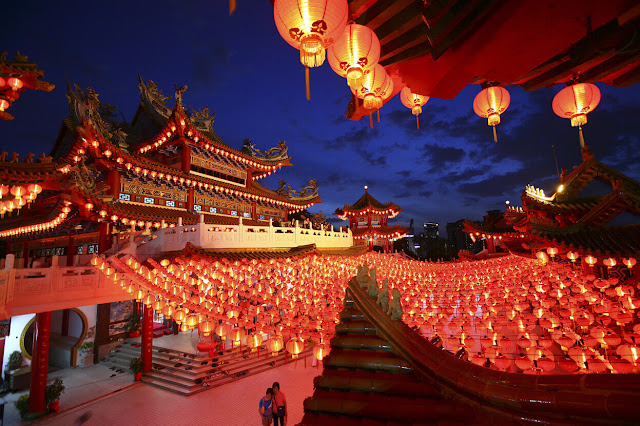What is Boun Pi Mai
Boun Pi Mai, the start of the New Year in Laos, is a splashy good time for visitors, although a decidedly more gentle ordeal than its same-day counterpart in Thailand (Songkran).The Lao New Year takes place in the middle of the hot summer season, in April. The new year celebrations usually last three days – 13-15 or 14-16 – though festivities in major locales can last longer than that (Luang Prabang’s Boun Pi Mai lasts for about 10 days).
During the New Year, the Lao believe that the old spirit of Sangkhan leaves this plane, making way for a new one. This belief – like the rest of Bun Pi Mai – is grounded in the Brahmanic and animistic religions that long preceded Theravada Buddhism, says former Culture Research Institute head Houmphanh Rattanavong.
Three Days of the Laos New Year
“In the Brahmanism religion it was believed that the time from January to the first day of Pi Mai in April is a dark, or bad, period of the year,” explains Mr. Rattanavong. “In Buddhism, the last day of Pi Mai is seen as a bright or prosperous period, so our ancestors chose April as the month of the New Year.”The first day of Boun Pi Mai, known as Sangkhan Luang, is considered the last day of the old year. Lao will clean their houses and villages on this day, and prepare water, perfume, and flowers for the days ahead.
The second day, the Sangkhan Nao or "day of no day", is neither part of the old year nor of the new year.
The third day, known as Sangkhan Kheun Pi Mai is the official start of the Lao New Year. Locals dress in their finest silk clothes and perform Tak Bat, the traditional offering of alms to Buddhist monks; then climb Mount Phousi to pray at the stupa at its summit.
At family gatherings later in the day, locals hold baci ceremonies for good health, and beg senior family members for forgiveness.
Getting Soaked in Boun Pi Mai
During the New Year, water plays a big part in the festivities – Lao bathe Buddha images in their local temples, pouring jasmine-scented water and flower petals on the sculptures. The faithful will also build sand stupas and decorate these with flowers and string.At each temple, monks will provide the water, as well as blessings for the devotees flocking to the temples and the white bai sri strings, which they will tie around devotees' wrists.
People also get soaked during Boun Pi Mai – people respectfully pour water on monks and elders, and less reverently on each other! Foreigners are not exempt from this treatment – if you're in Laos during Bun Pi Mai, do expect to be soaked by passing teenagers, who'll give you the wet treatment from buckets of water, hoses, or high-pressure water guns.
Locals sometimes throw flour as well as water, so you’ll feel both wet and doughy at the end of the holiday.
Celebrating Boun Pi Mai in Luang Prabang
While Boun Pi Mai is celebrated throughout Laos, tourists should be at Vientiane or Luang Prabang to see the holiday at its most intense. In Vientiane, families make the rounds of the different temples to bathe the Buddha statues, especially the ones at Wat Phra Kaew, the city's oldest temple.Luang Prabang is probably the best place to celebrate Boun Pi Mai in Laos, as it is the former royal capital and a present-day UNESCO World Heritage site. In Luang Prabang, the celebrations can stretch out to a full seven days, celebrated in different places around the city.
Tips for Travelers
Boun Pi Mai is considered part of peak tourist season in Laos, so don't expect to make any bookings on the spur of the moment. If you want to be in Luang Prabang or Vang Vieng during the Lao New Year, book at least two months in advance to get the dates you want.Consider it unavoidable: you will get wet during Boun Pi Mai. (So will everybody else.) At the same time, there are certain locals you shouldn't throw water at – monks, elders, and maybe the occasional well-dressed woman on her way to an important New Year event! Choose your targets judiciously, but expect to be liberally soaked.
See more: Explore the Konglor Loop in Laos
Source: Internet



















































